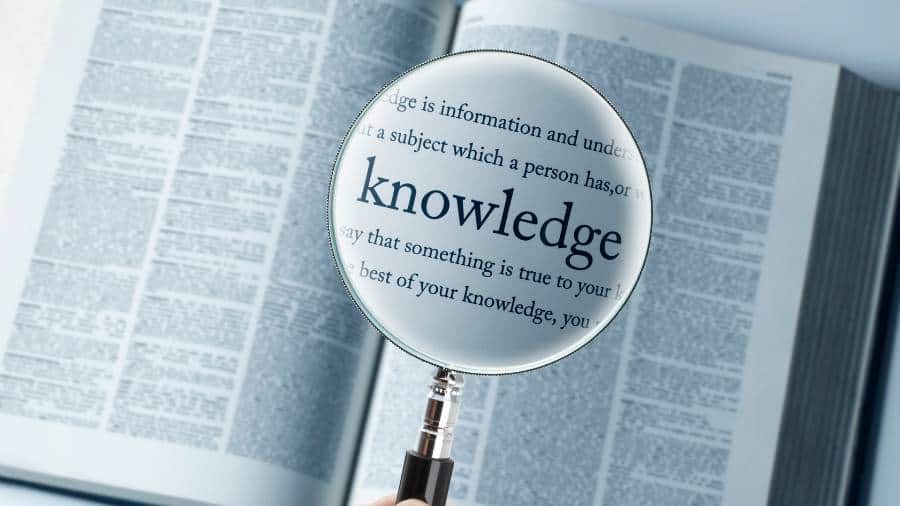This article may contain affiliate links. Please see our affiliate disclaimer in the footer menu for more information. Thank you for your support!

If you plan on hiring a freelance proofreader, you’ll benefit from knowing a few details about working with one. Even if you’ve worked with a proofreader before, I think you’ll find some helpful tidbits in this article.
As a trained proofreader who has worked with many clients, I’ll give you insights that can potentially save you time, money, or both!
What to Know Before Hiring a Freelance Proofreader
1) You may be better served by a copy editor.
You want to ensure that a proofreader is the editorial professional who best meets your needs.
Although proofreading and editing are used interchangeably, they aren’t synonymous. Proofreading and editing are at opposite ends of the four-stage editorial process.
And copyediting is different from proofreading and editing.
So how do you know who to hire?
A proofreader is your best bet if you need someone to correct grammar, capitalization, punctuation, spelling, and formatting errors.
However, if your writing needs a bit more TLC, you’ll want to hire a copy editor instead.
A copy editor checks for the same kinds of mistakes as a proofreader, but their focus is broader. Copy editors fix slipups with syntax (sentence structure) and improve a document’s clarity, concision, and consistency.
A copy editor costs more than a proofreader but offers more assistance to boost the quality of a text.
If you need more detailed info about which editorial professional to hire, you can find it in my article that discusses proofreading and editing.
2) You can ask for a sample edit to assess a proofreader’s work.
You may be leery of dropping too much cash before knowing how much a particular proofreader can assist you. Luckily, a simple solution is available: a sample edit.
A proofreader performs a sample edit by proofreading a small portion of your document so you can see their (hopefully) stellar skills on display.
If you’re not pleased with the sample edit, you can look for someone else.
Why is it called a sample edit and not a sample proofread?
I have no idea. Don’t you think that would make more sense given the differences between proofreading and editing? I do. Maybe the name will eventually change. 😊
3) Giving a proofreader ample time will behoove you.

Proofreading is a slow process—probably much slower than you think. I wrote an article about proofreading pace if it piques your curiosity.
People tend to wait until the last minute to hire a proofreader, which is perfectly fine.
However, having a slow turnaround time (TAT) for your document gives you a couple of advantages.
First, it ensures the proofreader won’t need to rush through your text to get it back to you on time. Fast proofreading is an oxymoron.
There’s good proofreading, and there’s fast proofreading. But there’s no good, fast proofreading. 😉
Second, it guarantees you won’t have to pay more for having a tight TAT.
4) Some proofreaders give discounts for long documents.
Some proofreaders offer reduced prices for lengthy texts.
So if you need a book manuscript proofread, you’ll probably be better off submitting the entire manuscript at once instead of going chapter by chapter.
However, if you’d like to get a good idea about how a proofreader works, giving them a portion of a longer work as their first project is a smart strategy.
This can serve as a more in-depth sample edit.
5) You may need to have some knowledge of MS Word.
Although you may be submitting a Google Doc or PDF for proofreading, chances are you have an MS Word document.
MS Word and Google Docs are ideal for proofreading because you, as the client, can accept or reject proposed edits with one click. You can also easily read comments in the margins of a text.
However, if you want the final say on the changes made to your work (most people do), you’ll need to know how to keep or discard the proposed edits and how to delete any comments in the margins after you’ve read them.
Doing this with a Google Doc is simple, but you’ll need more know-how if you have a Word document.
Here’s a video explaining what you need to know if you send a Word document to a proofreader. Don’t worry—you don’t need to know much!
If you have any problems reviewing your proofread document, this article from Scribbr may help you with troubleshooting. Scroll down to the heading “Common problems” at the end of this brief post.
Going through the edits and comments is fairly straightforward if you have a Google document.
Finally, if you happen to have a PDF, here’s a video to help you.
6) Proofreading rates are based on several factors.
Proofreaders typically consider the following variables when determining rates:
- their level of training and experience
- the genre of the writing
- whether expertise is required to work with the text
- the turnaround time
- the degree of intervention a document requires
Most qualified proofreaders charge 1–3 cents per word, which equates to $2.50–$7.50 per 250-word page.
I penned a post about the price of proofreading if you’d like to get a better picture of how much you’re likely to pay to get a pair of eagle eyes to proof your prose.
7) Hiring a freelance proofreader saves you money.

If you hire a proofreader directly—instead of going through a proofreading and editing company—your wallet will thank you.
And if you need your document back quickly, your wallet will thank you twice.
Although a freelance proofreader will likely charge you more if you need your text back pronto, you won’t be paying the exorbitant upcharge that a proofreading service typically tacks on.
However, the main advantage of using a reputable proofreading company is that the proofreaders are carefully vetted, so you’re almost certain to receive excellent service. Some businesses also guarantee the quality of their services.
But if you go this route, expect to pay at least twice as much as you would if you were to hire a freelancer directly.
8) Proofreaders are perfectionists, but they’re not perfect.
Most proofreaders are naturally perfectionistic.
They try to transform all the typos in a text.
They strive to stamp out spelling snafus in sentences.
They pride themselves on perfecting punctuation within paragraphs, and getting rid of grammar goofs is their game.
But they’re still human beings; they still make mistakes.
That said, they need to find and fix most of the mistakes in a document since that’s what they’re hired to do.
Om Proofreading explains why proofreaders occasionally miss errors if you’d like to know more.
I hope this article has given you useful advice about what to know before you hire a freelance proofreader.
Om Proofreading talks about how to hire a proofreader when you’re ready for someone to put a professional polish on your project.
Best wishes to you!
“You are never too old to set another goal or to dream a new dream.”
– Les Brown
Recent Posts
Punctuation is important because it enables us to communicate our message clearly and effectively. Without punctuation, we wouldn’t understand how units of a sentence relate to one another or how...
Although you're probably somewhat familiar with adverbs, you may be unaware of sentence adverbs. As a trained proofreader who has studied the parts of speech, I can help you understand this unique...
